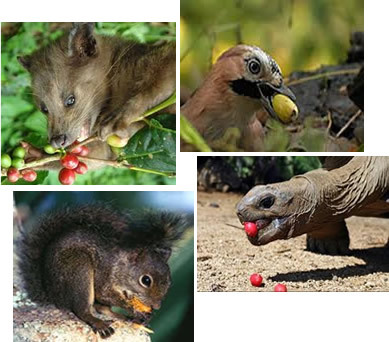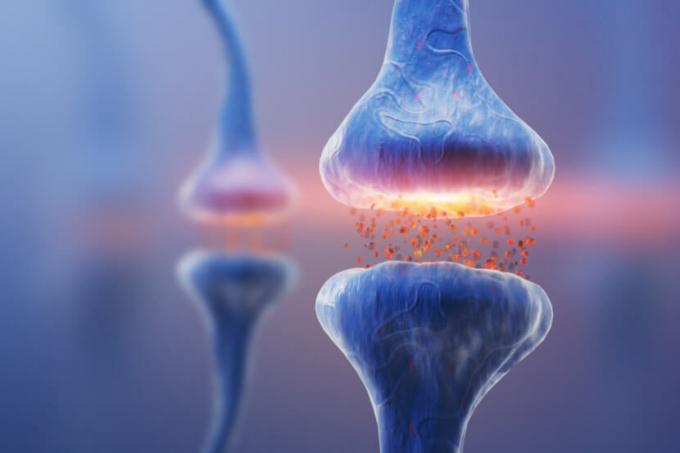In the article “Reproduction in plants”, we saw how reproduction in plants and pollination in flowers occur. Well then, after the pollen grains reach the gynoecium and reach the egg, fertilization occurs and an embryo is formed. It is important to know that the flower ovary will give rise to fruit, while the egg from the flower will give rise to the seeds, which, most of the time, are found inside fruits.
You fruits are very important in seed dispersal. If an animal feeds on some fruits and seeds of a certain plant and then goes to different environments, it will carry these seeds in its stomach. After defecating, these seeds will fall to the ground. If they find the right conditions, the seeds will germinate without major problems.

Many animals feed on fruits and seeds. Thus, they help in its dispersion
when mature, each and every seed will germinate if it finds suitable conditions. we can define germination as the resumption of growth and development of the embryo. For this to occur, the seed will mainly need water, oxygen gas and proper temperature.
One of the first things that happens in germination it is the absorption of water by the seed. As the seed fills with water, the shell breaks open, allowing oxygen (very important for the embryo's cells) to enter. It is important to remember that the embryo inside the seeds has nutritious substances that will nourish it as it develops.
After the embryo's cells receive water, oxygen and the right temperature, they begin to develop, giving rise to first structure that comes out of the seed, which is called radicle. THE radicle will be the future root of the plant and it begins to grow into the soil, where it will take the mineral salts and water it needs to continue to develop. In the small plant we can also see the stem and the gemmula. The stem will give rise to the initial part of the stem (called the hypocotyl); while the bud will originate the upper part of the stem (called the epicotyl) and the first leaves.

In the image we can see how the seed develops during its germination
If the seed of a plant germinates in a suitable place, it will be able to develop its roots, stem and leaves, transforming itself into a young plant. Once adult, it will produce fruits and seeds, which will continue the life of the species.
There are some seeds that go through a period called dormancy period and only manage to germinate after some stimuli from the environment. Seeds from cold regions can only germinate after some time of exposure to the cold. In this way, they always germinate after winter, when the temperature and other environmental conditions are right. Seeds from dry environments, on the other hand, germinate only during the rainy season, which is when there is a lot of water available.
You can watch a seed germinate in your home. For this you only need a disposable coffee cup, cotton, water and bean seeds. Wet the cotton well with water and then place it inside the disposable cup. Take the bean seeds and place them in the cotton that is inside the cup. It is important that you leave the cup in an environment where there is sunlight, never forgetting to keep the cotton always moist, so that the seeds can develop. Wait a few days and you will see the seeds sprouting!

Little bean seed germinating in cotton
by Paula Louredo
Graduated in Biology


